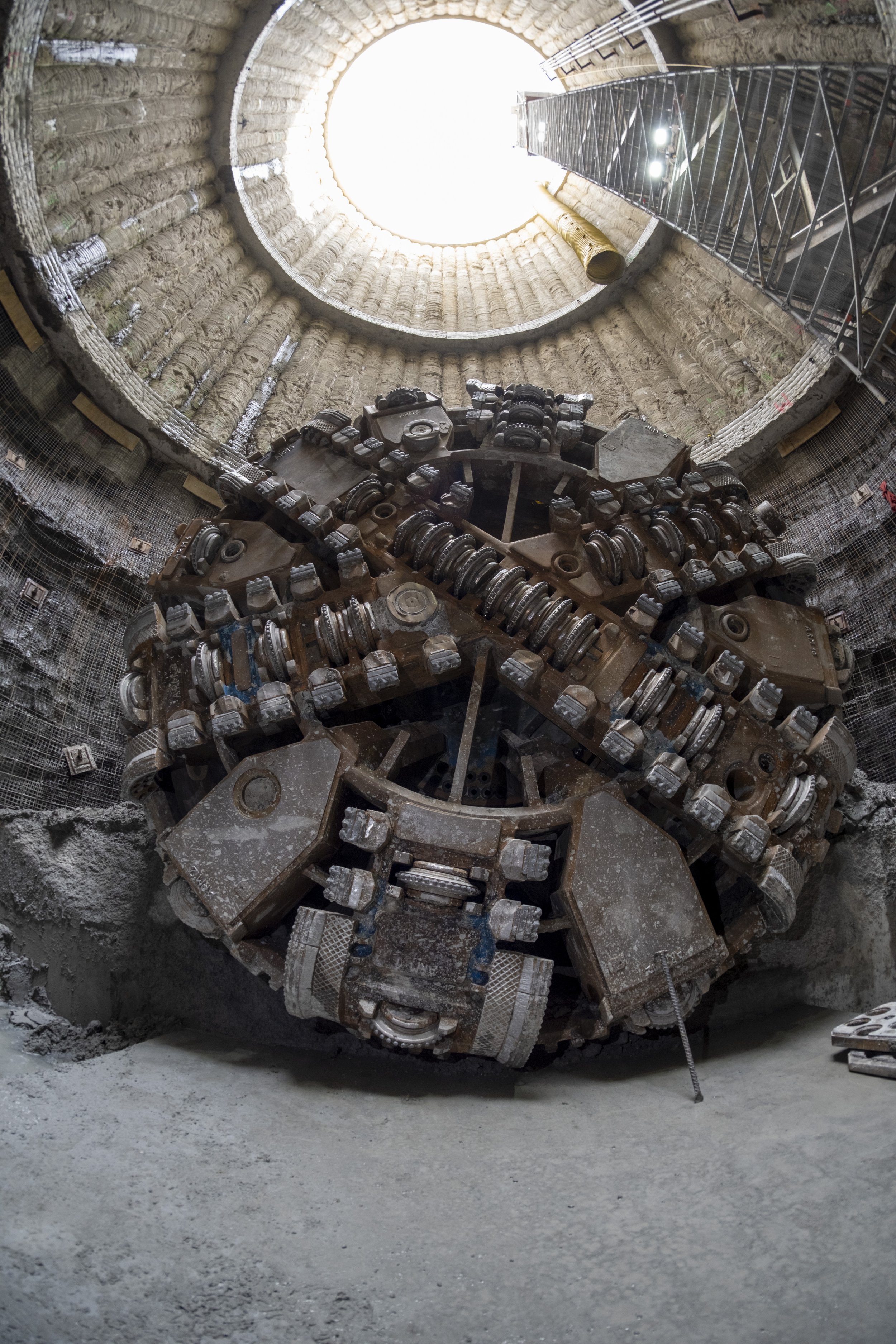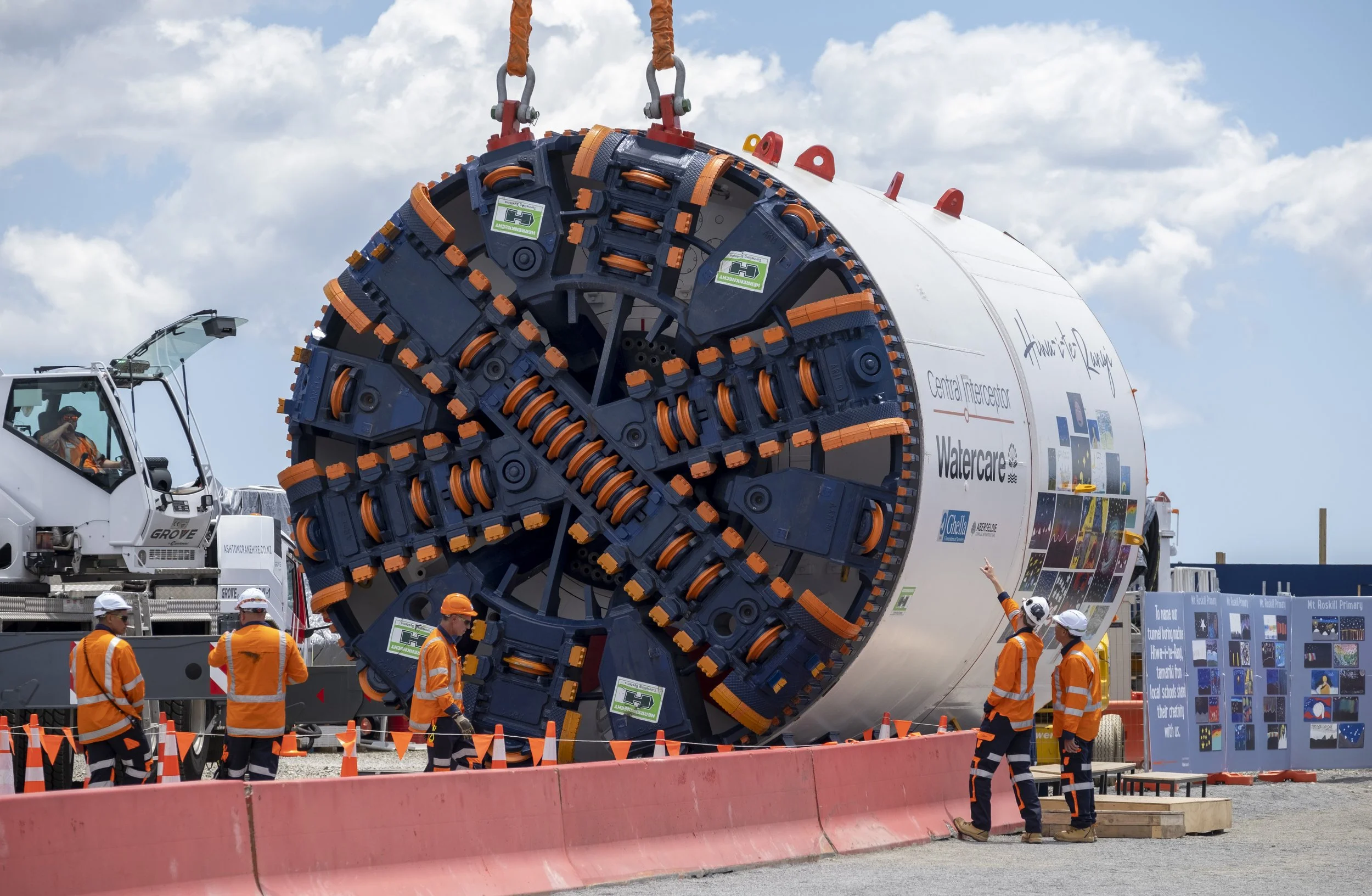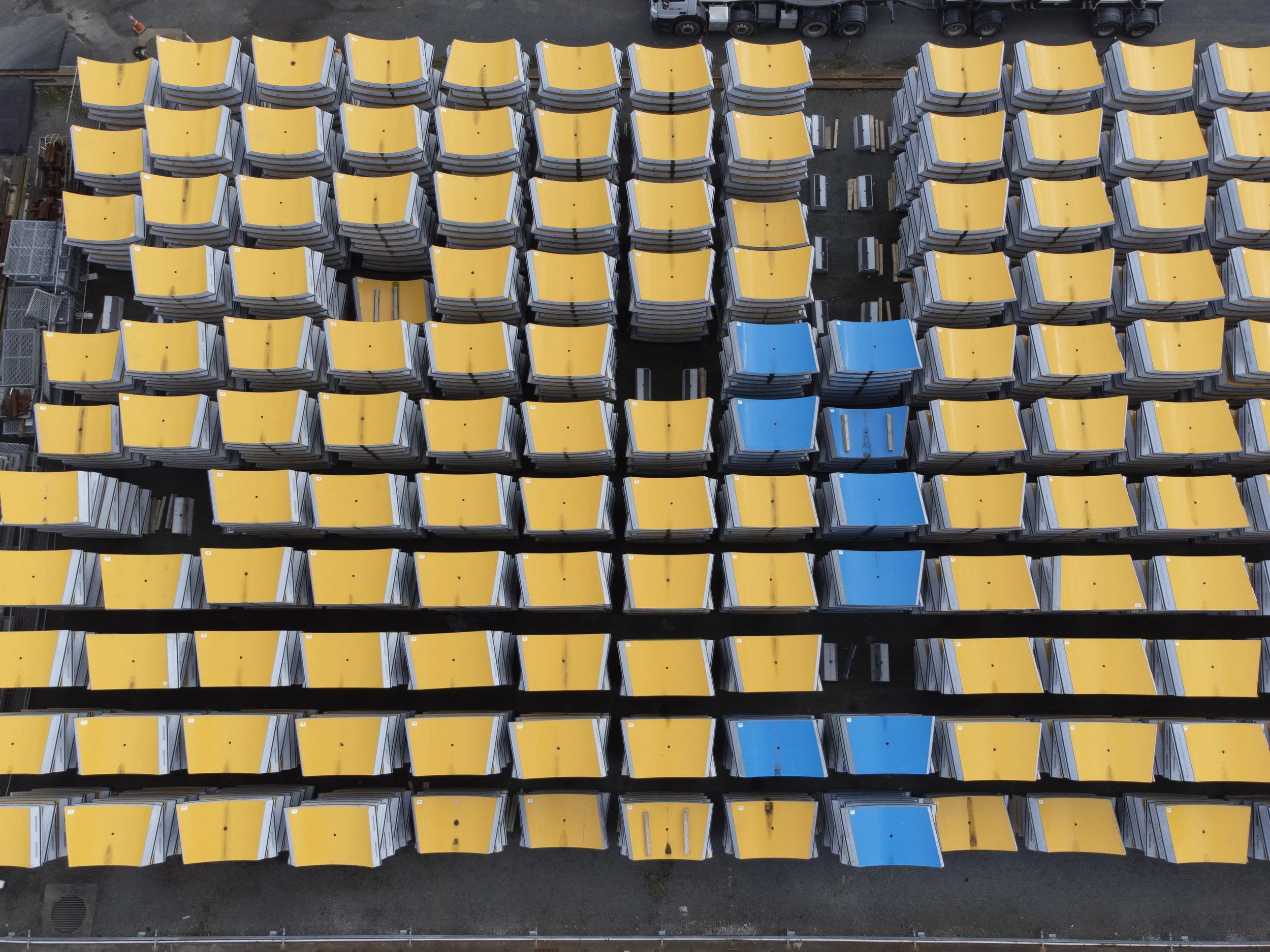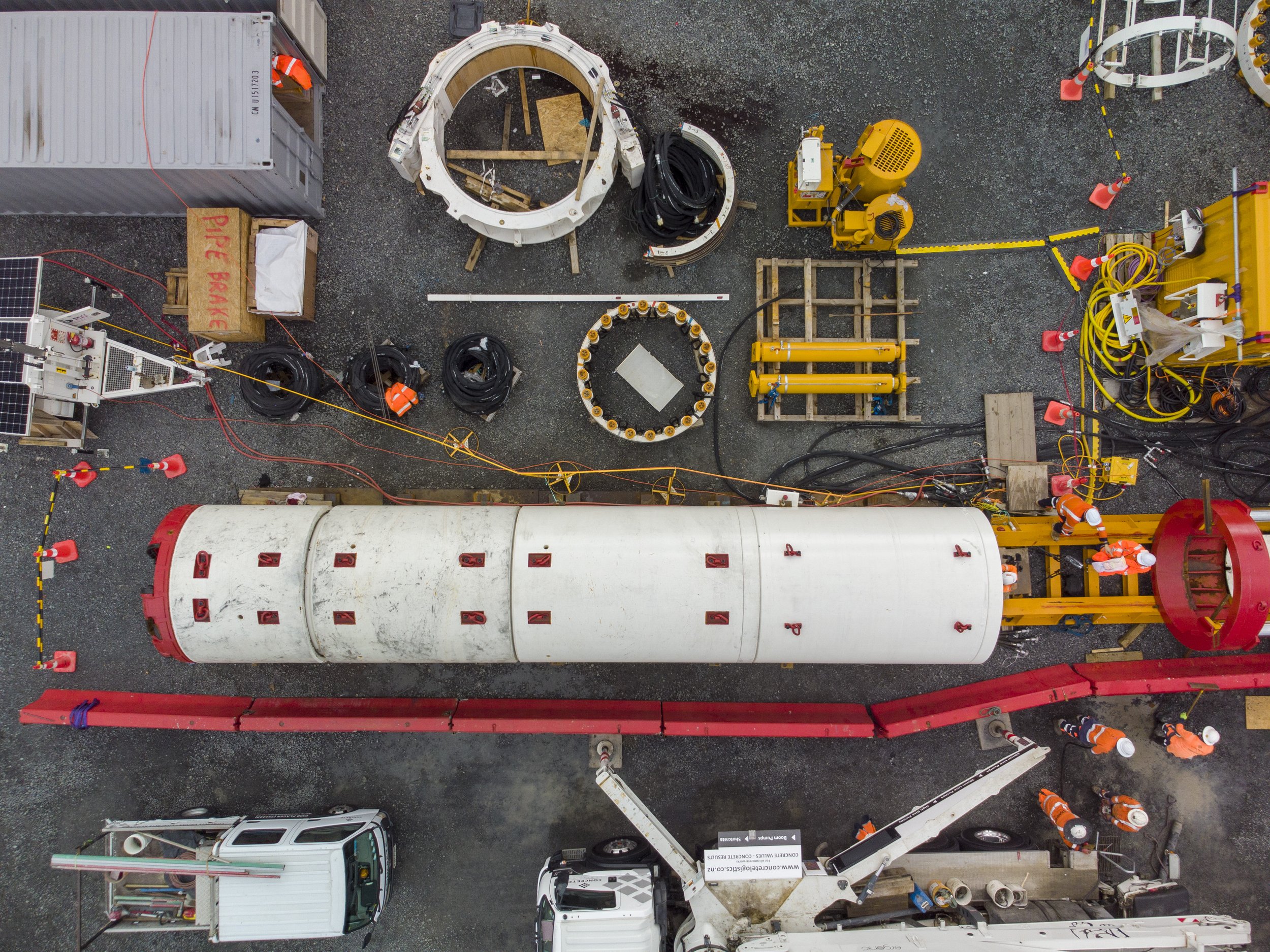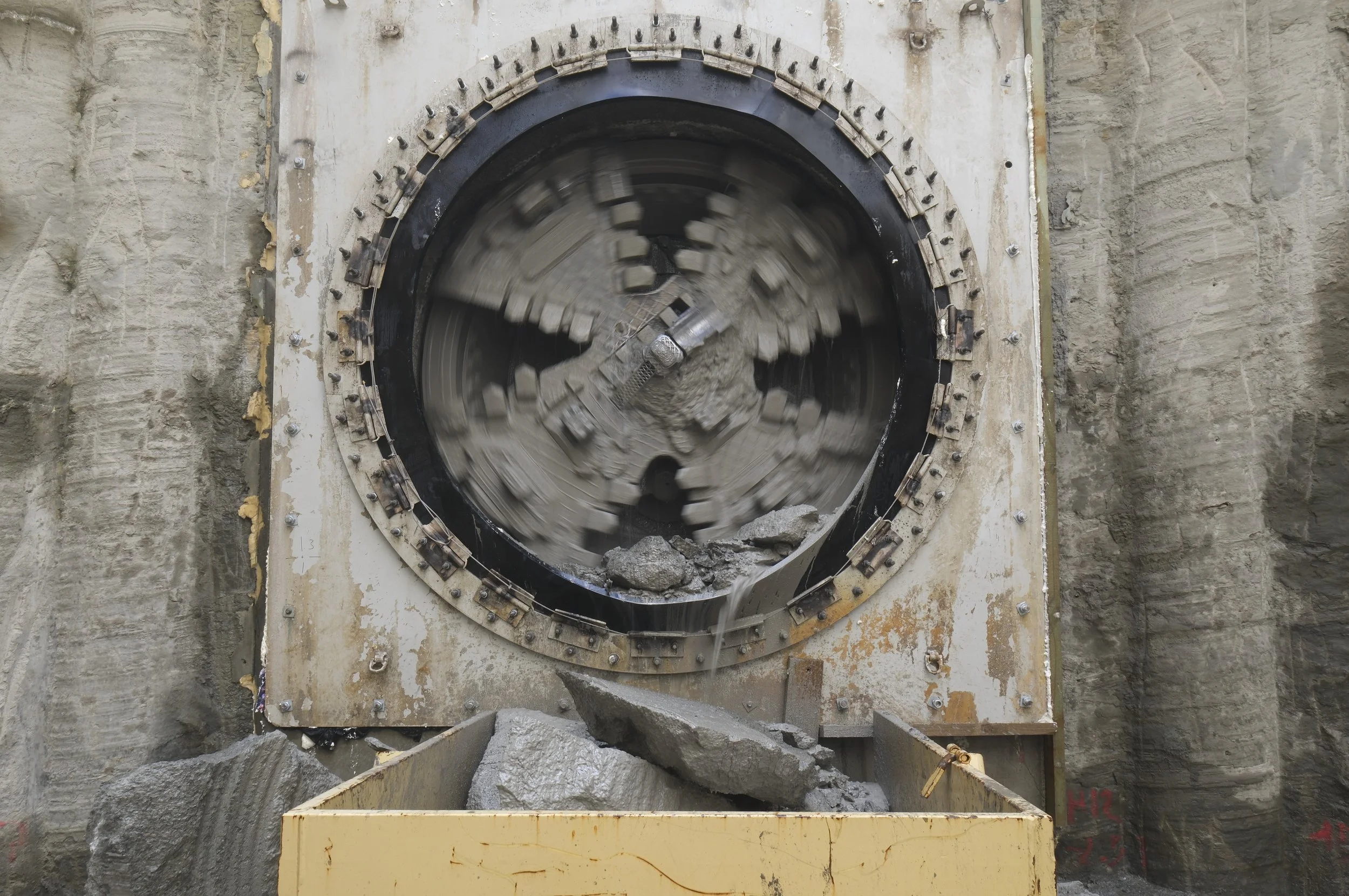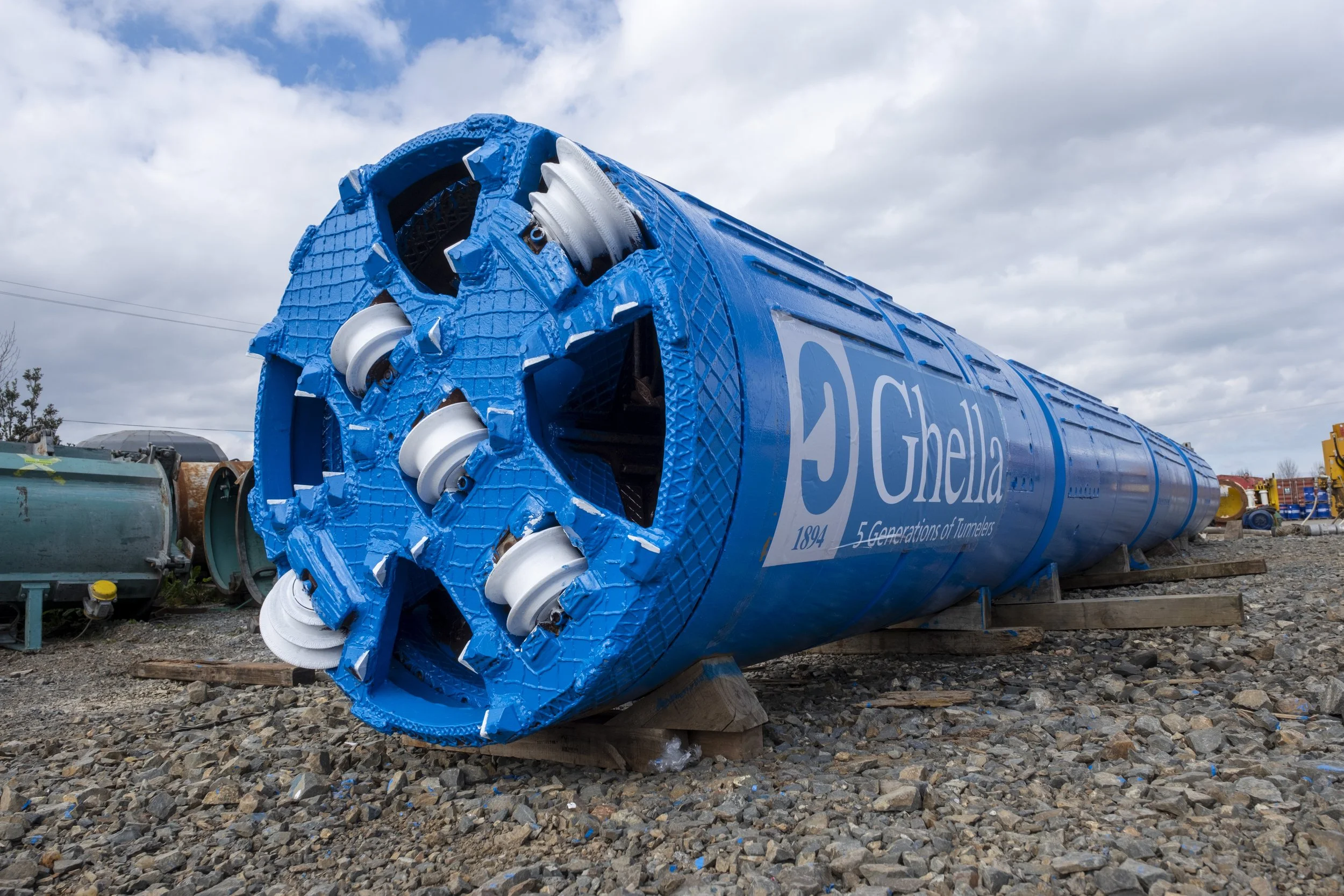Central Interceptor
DATE: 2019-2026
CLIENT: Watercare Services Limited
LOCATION: Central Auckland
MAIN CONTRACTOR: Ghella Abergeldie Joint Venture
ESTIMATED COST: $1.523b
Final breakthrough, Point Erin Reserve, March 2025.
The Central Interceptor (CI) is a stormwater and wastewater conveyance tunnel beneath Auckland. It runs between Point Erin, in Central Auckland, to Māngere Wastewater Treatment Plant, located in the south of the city. It is the longest bored wastewater tunnel in New Zealand.
The Central Interceptor is designed to significantly reduce wet weather overflows into Central Auckland waterways, improve water quality in the Waitematā Harbour, prepare Auckland for future population growth, and increase resiliency to the existing wastewater network.
The main Central Interceptor tunnel is 16.2km long, has a 4.5m internal diameter, and was constructed at depths between 20 m and 110 m below ground level. The tunnel gradient was set at 1:1,000 to allow water to flow downhill via gravity. At the height of construction activity, 600 staff worked at 17 sites across Auckland.
Two link sewers were constructed, one through Blockhouse Bay and the other through Mount Albert. Link Sewer C is 3.2 km long and 2.1m in diameter. Link Sewer B is 1.1km long and 2.4m in diameter.
Nineteen shafts were constructed to facilitate the connection of Central Interceptor and the Link Sewers to the existing wastewater network.
An Earth Pressure Balance (EPB) Tunnel Boring Machine (TBM) manufactured by Herrenknecht was used to construct the main CI tunnel.. The TBM was named ‘Hiwa-i-te-Rangi’ after a Matariki star by students from schools along the tunnel route. The outer diameter of the cutter head was 5.4m in diameter.
Tunnelling commenced from Māngere in July 2021 and reached Point Erin in March 2025. Hiwa-i-te-Rangi excavated between 15m to 20m of tunnel spoil per day, which was deposited at Puketutu Island, where Watercare is carrying out a rehabilitation project at a former quarry.
The primary tunnelling medium was interbedded sandstone and siltstone from the East Coast Bays Formation (ECBF). As the tunnel was excavated, a segmental concrete lining was placed to form the tunnel. Six concrete segments were fitted together to form a ring. 10,122 rings, corresponding to 60,732 segments, were constructed in total.
A micro tunnel boring machine (mTBM), named ‘Domenica’, was used to construct the two Link Sewers via pipe-jacking methods. The primary tunnelling medium was ECBF. Link Sewer C was constructed first – between May 2021 to March 2023, and then the machine was refurbished and up sized to construct Link Sewer B, between July 2023 to April 2024. On average, Domenica advanced 10 metres per day.
A slurry mTBM (AVN800) named ‘Victoria’ was used to construct shallow sewers through Keith Hay Park. The primary tunnelling medium was soft soils categorised as Tauranga Group Alluvium. Branch 9B was constructed first, between October 2023 to November 2023 closely followed by CC9, between dates January 2024 to May 2024. On average, Victoria advanced 12 metres per day.
Three mined adits have been constructed to facilitate construction of the Central Interceptor to future Watercare projects.
A new pump station was constructed at Māngere to lift the flows 35m from the Central Interceptor tunnel to the ground surface where the flows are treated. The existing Wastewater Treatment Plant was upgraded to cope with the additional flows supplied by CI.
The southern section of the scheme was commissioned in January 2025, collecting stormwater and wastewater flows from Blockhouse Bay and directing them towards the upgraded Māngere Wastewater Treatment Plant. Construction continues on the northern section of the scheme, with commissioning of the northern section scheduled for 2026.
The Central Interceptor project is being delivered safely, on track and almost to budget. This is a rare feat amongst major infrastructure projects.
Photos supplied by Simon Runting, Onsite Images.

